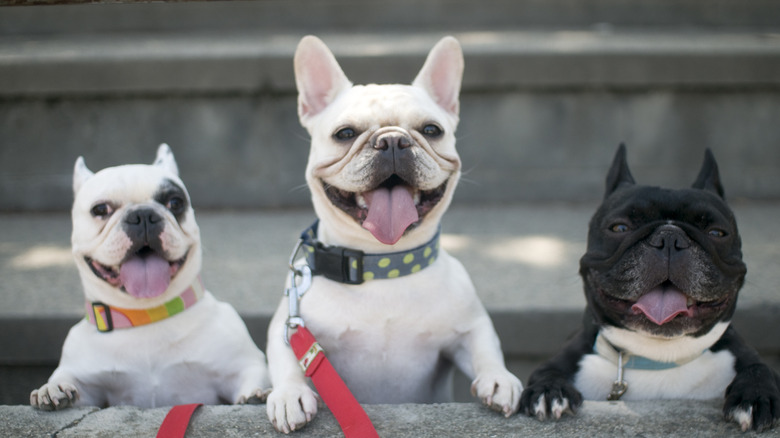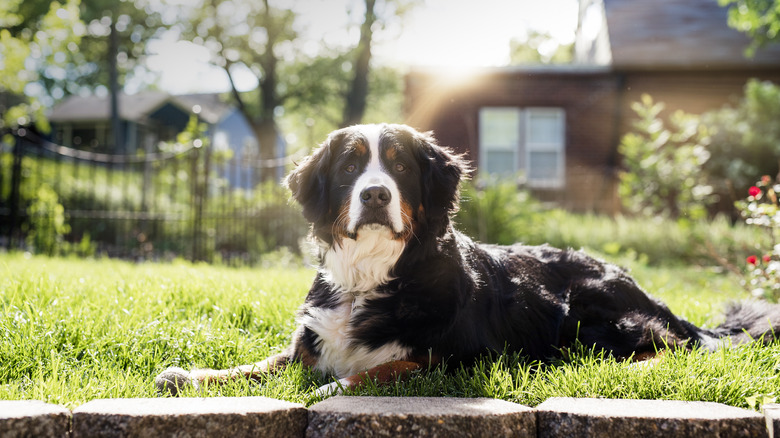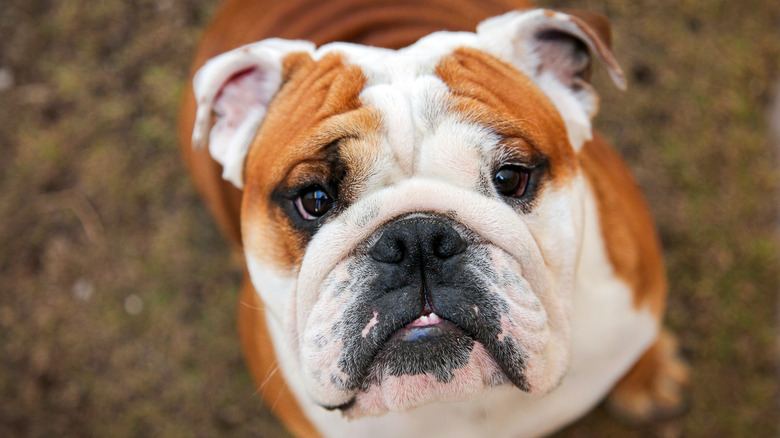Dog Breeds That Have The Shortest Lifespans
We all want nothing more than for our beloved pups to live forever, but the unfortunate truth is that this simply isn't possible. Some types of canines, such as those bigger in size or prone to health issues often don't have the same lifespan as some of the smaller and healthier varieties. However, no matter the breed, there are measures you can take to ensure your precious pup lives the happiest and healthiest life possible.
One way to potentially help your pup live longer is by feeding them a healthy diet and keeping them active to assist in maintaining a healthy weight. And don't forget to go to the vet regularly. Of course, even if you take steps to improve your dog's quality of life, some factors are out of your control, such as their size and breed, and may limit them to a shorter existence.
Big dogs
While smaller pups tend to be the longest living dog breeds, such as chihuahuas who live for 15-17 years, large breeds typically have a shorter life expectancy. Scientists haven't completely figured out why this is, however there are some theories that possibly explain why our big canines tend to live for less time. One prediction is that since larger dogs grow much faster than their tiny friends, they can contract illnesses related to old age earlier. With large dogs growing at a faster pace, it means their cells are also divide more quickly, which can increase their susceptibility to cancer.
Large breeds, such as golden retrievers, rottweilers and German shepherds, tend to live an average of 10 to 12 years. Giant dog breeds, such as great Danes, mastiffs, and Saint Bernards have life expectancies of only eight to 10 years. With cancer being a concern in larger dogs, some of the breeds most prone to the disease include Bernese mountain dogs, golden retrievers, great Danes, Rottweilers, and Labrador retrievers.
Brachycephalic breeds
Along with larger dogs, brachycephalic breeds tend to have shorter lives. They have flat faces and short noses and, because of their physical structure, are more prone to health issues. Some of the popular brachycephalic breeds include bulldogs, pugs, boxers, and shih tzus. Some of the health problems they face include eye issues, breathing problems that may require home treatment, and joint issues, among a variety of others. The life expectancy of an English bulldog is around eight to 10 years, whereas the smaller shih tzus have a wider lifespan range of approximately 10 to 18 years.
Despite their smaller size, pugs and French bulldogs are prone to some of the shortest life spans due to a condition called brachycephalic obstructive airway syndrome caused by their flat facial structure that can lead to health issues such as upper respiratory illnesses. The lifespan of a dog with this condition is only around 8.6 years, a stark contrast to the average dog's lifespan of 12.7 years. This syndrome especially impacts pug and French bulldog lifespans, with the Humane Society of the United States stating that approximately 50% of pugs and French bulldogs show signs of brachycephalic obstructive airway syndrome. When compared to their non-brachycephalic small dog pals, which have an average lifespan of 10 to 15 years, these two breeds have a much shorter life expectancy.


